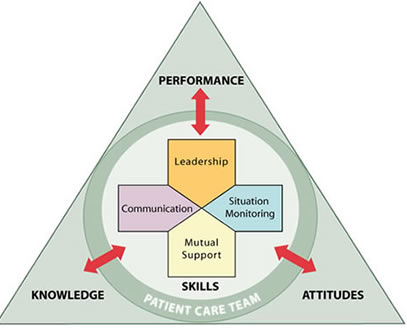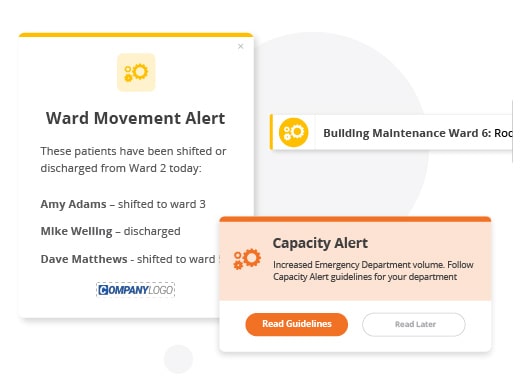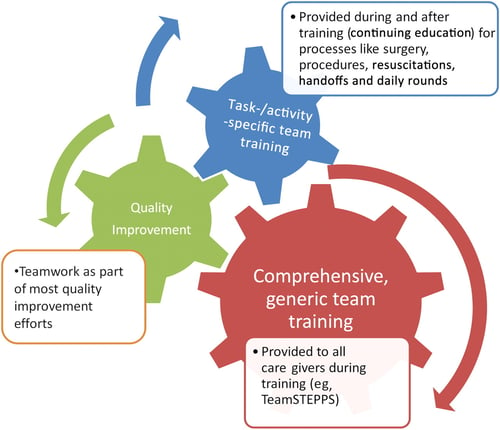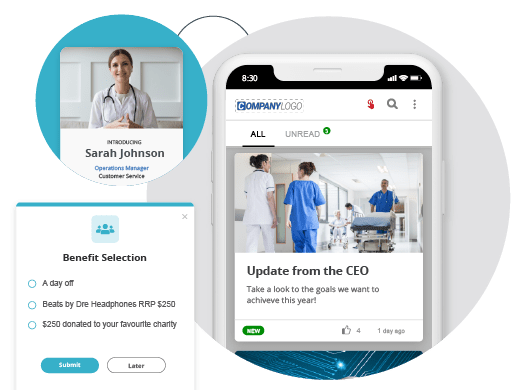
Teams are a critical component of success. From the sports field to corporate boardrooms, effective teams drive greater results.
In busy healthcare environments, teams are faced with unique challenges. High patient volumes, growing attrition rates, organizational change due to the COVID-19 pandemic, and increased demand for health services all threaten the effectiveness of clinical and administrative teams.
While effective teamwork is more essential as ever, achieving it has become harder. Team communication helps bind capable individuals into high-performing teams.
Healthcare professionals agree that good teamwork and effective communication decrease the risk of harm to patients, and also increase staff engagement. The five tactics below will help you improve teamwork and deliver better health outcomes.
Why is Teamwork Important in Healthcare?
Teamwork in healthcare drives more successful outcomes for both patients and the organization. A lack of teamwork is often identified as a primary point of vulnerability for quality and safety of care.
Hospitals and similar facilities can find effective teamwork harder to achieve due to their traditional role structures. Hierarchical working models make it harder for younger or less experienced staff to feel an integrated part of the team.
It’s an area line managers need to address. Dysfunctional teams can result in mistakes and complications.

Source: TeamSTEPPS
The US training program TeamSTEPPS (Team Strategies and Tools to Enhance Performance and Patient Safety) defined the key elements of teamwork. These are:
-
Communication
-
Situational awareness
-
Leadership
-
Mutual support
The following five tactics provide examples of how this can be accomplished in your organization.
1. Define Clear Roles and Shared Goals
Make sure all team members know what their roles and responsibilities are – particularly if this changes from shift to shift, or if the team has regular personnel changes.
Failing to define this can result in some tasks being neglected because no one knows whose job it is. In other cases, tasks may be duplicated because multiple team members believe it to be their responsibility.
Digital communication channels can improve clarity for staff in this area. Pop-up notifications can be delivered to both desktop computers and mobile devices to confirm the responsibilities of each team member.

2. Empower Staff to Speak Up
Encourage staff to speak up with issues, concerns, or questions, however trivial, without fear. This could either be in front of the team or anonymously. An honest airing of opinions promotes inclusivity within the team and reduces the likelihood of issues festering.
Introduce safety huddles during a shift, where everyone in your team can make observations and share how they’re feeling. Are any patients causing concern? Is the workload manageable? How are the team’s energy levels?
Issues that staff don’t feel comfortable broaching in front of the team can be submitted through anonymous online surveys. Getting issues into the open, and addressing them, is key to maintaining a positive team dynamic.
3. Provide Team-Based Training
Evaluate the current staff education and training offered. Your program should be designed to improve both the job-related skills of employees and the collaboration of teams.
Team-focused training can be either general or simulation-based, building real-world capabilities through training in related scenarios. When your team encounters a situation for real, effective response and working together is second nature.
Use RSVP alerts to promote training sessions and increase registration and attendance.

Source: BMJ Journals
4. Communicate Clearly and Successfully
Introduce processes into your team which helps improve the quality of your communications. A common cause of errors is when one employee communicates with a colleague but the message either isn’t received or understood.
Impress upon your team the importance of checking whether the messages they’ve sent are received as intended. This is particularly necessary when healthcare team members aren't all familiar with each other.
Debriefs at the end of shifts can help instill this discipline and reflect on how well it’s been achieved. These short meetings also support sharing information and identifying areas for improvement.
5. Focus on High-Risk Situations
Pay particular attention to those high-risk situations which can become communication black holes. Shift handovers is a common example. Communication from the team leader is essential at this time to ensure all issues, responsibilities, and roles are understood during the shift.
Consider beginning shift handover meetings with all team members introducing themselves. This breaks down barriers and makes it easier for staff to approach colleagues during the shift when issues arise.
Scrolling Desktop Tickers can provide team members with up-to-the-minute information on patient numbers, priority cases, and tasks that must be completed.

Communication in healthcare teams is key to building successful teamwork. Team members are equipped with the knowledge and skills to work together more effectively. The potential for mistakes is reduced and the quality of service – and patient care – is improved.
The SnapComms employee communication platform is used by hospitals and healthcare facilities around the world. Speak to us if you’d like to find out more.


